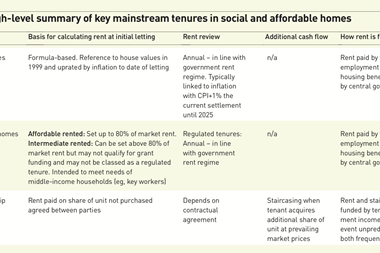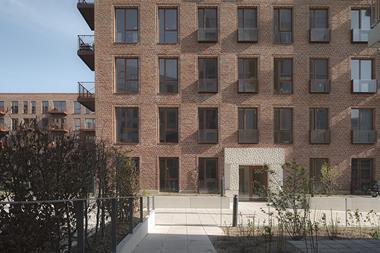UK local authority pension funds and European institutional investors have provided a fresh wave of capital for CBRE Global Investors’ growing UK Affordable Housing Fund.
The open-ended vehicle, which pursues social-impact objectives as well as financial returns has deployed nearly all of the £250m (€298m) it raised in 2019 and has secured a further £120m.
Two thirds of the Local Government Pension Schemes (LGPS) that joined the fund in 2019 have provided fresh commitments, alongside new entrants, including investors from continental Europe.
Fund manager DJ Dhananjai said European investors were increasingly looking at the fund now that it had “a demonstrable track record” and been “distributing income since the middle of last year” – while the uncertainty related to Brexit that existed when the fund was launched, particularly in relation to currency risk, had abated.
Meanwhile, four of the six UK LGPS funds that were early investors in the fund – Hampshire County Council Pension Fund, Rhondda Cynon Taf Pension Fund, Wiltshire Pension Fund, Surrey County Council Pension Scheme, Bedfordshire Pension Fund and Royal Borough of Greenwich Pension Fund – have increased their investments in the fund.
The fund has to date made 12 investments across the UK, funding the provision of more than 1000 affordable homes. CBRE Global Investors said the new capital-raising would enable it to deliver more than 2,000 homes.
The open-ended fund, which allows for quarterly subscriptions, is intended to grow over time as a perpetual-life vehicle.
“What the residential market needs is very long-term capital,” Dhananjai said. “The way it’s structured, it will become more of an income-distributing fund where the major component of the total returns would be income returns.
“We’re not looking to sell many of these assets and that’s why when we are purchasing these assets they tend to score very highly on ESG metrics altogether, so that they are future-proof.”
The fund has a developed a social impact framework with specialist advisory firm The Good Economy, which enables it to set and report on social-impact objectives.
Dhananjai said investors had invested in the fund as part of their real estate allocations, rather than specific social-impact allocations.
“Most of our investor base expect us to deliver on our fiduciary responsibilities towards their financial objectives. This type of investing has the additional benefit of social impact,” he said.
“It is quite often thought that if you achieve social impact you have to give up on your financial returns. [But] if you design it well and you mitigate the risks in the whole process of delivering the housing… investing with the right developers and in the right locations, you benefit those who are unable to afford [homes] in the local market [and] you achieve the financial returns alongside social impact.”
However, Dhananjai has observed a shift in emphasis among investors looking at the fund. It was clear during “the latest round of capital raising [that investors] were very minded to see what the social impacts were,” he said. “There is a shift towards seeing this as core to their social-impact investing.”
Since its launch in the 2019, the fund has produced two annual impact reports. “They are able to see what we said would be delivered under the social impact framework, whether that’s been delivered or not, and to what extent,” Dhananjai said.
“We want to be very transparent and open – happy to share what we can and be approachable. It’s an emerging sector so it benefits everyone.”
To read the digital edition of the latest 91��ý���� magazine click here.
















